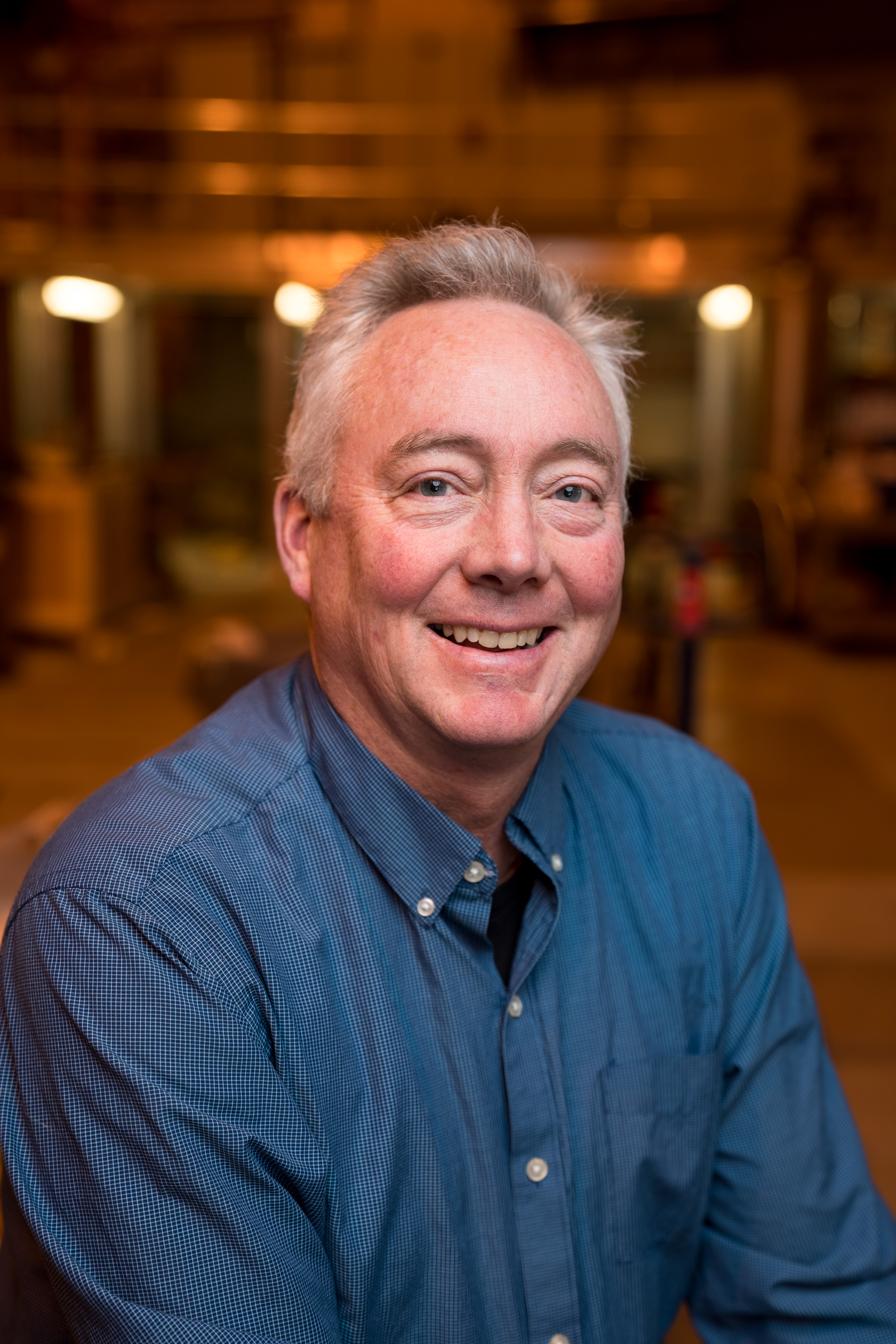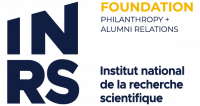
“In fact, my time at INRS really shaped the professor-researcher I have become. That is why I operate a research centre with a rather flat organisational structure. I have recreated this sense of collegiality here. Second, the very nature of the organisation—a national graduate institution, with close links to industry. It only seemed natural to me to link research with industry.”
Dennis G. Whyte
M.Sc. in energy sciences, 1989
Ph.D. in energy sciences, 1993
Director, Center for Plasma Science and Nuclear Fusion, and Hitachi America Professor of Engineering, Department of Nuclear Science and Engineering,
Massachusetts Institute of Technology (MIT)
2023 Prix Lumières Awardee • Trailblazer
Why did you choose to study at INRS?
In a nutshell, because it was the best Canadian university to study nuclear fusion. In my opinion, it’s the people who have the greatest influence on your career. In my case, it was a professor at the University of Saskatchewan who knew Professor Brian Charles Gregory, the director of the INRS-Energy Centre at the time, well. When I was an engineering physics undergraduate, there were three major industries in my home province: wheat, oil, and hockey. I paid my way through school by working for an oil company. I took a course in plasma physics with Professor Harvey Skarsgard and I was just fascinated by fusion. It was 1986. I just told my professor that I really liked the course and asked him if there were any job opportunities in this area. He told me that there was a new scientific experiment, a brand new Canadian nuclear fusion program starting in Quebec. He wrote a letter of recommendation—a real letter in a mailed envelope—to the Tokamak team in Varennes, who were going to build the country’s first experimental magnetic confinement device. It was the five minutes that changed my life.
Two weeks later, the answer came: I was offered a job at the Tokamak de Varennes (TdeV). I was going to move to Montreal to work on magnetic fusion! It was a dream come true.
Since one day a professor offered me a unique opportunity that changed the course of my life, in my career as a professor, I never refuse to meet students. I see it as my job to help them make the right connections and it’s a role I really take to heart.
What memories do you have of your experience at INRS?
It was a great experience from the start. That summer, I worked on relearning French (my mother is Franco-Saskatchewanian), and then I arrived in Varennes in mid-August, right in the middle of a corn roast by the IREQ and INRS-Energy teams. There was a great sense of community, the people were great and there was a real team spirit.
Everyone was very patient with me as I was breaking French. I quickly worked in the lab and got my hands into research. Within two weeks of research, I realised that I had found my path: I was going to devote my life to fusion research. I immersed myself in French-speaking Quebec culture —the sugar shack! —and deep-dived into fusion and plasmas.
Do you have a favourite memory from campus?
I remember going to play hockey on Friday mornings before breakfast. Everyone taught me Quebec hockey terms!
I also remember some outstanding people. Brian Gregory, who has become a lifelong friend, Barry L. Stansfield, Tudor Johnston and Bernard Terreault are among those who stick in my mind. They all taught me everything about research work. I also had great interactions with the staff, the technicians, Étienne Charrette comes to mind, and my fellow students too. We were only a few English speakers among the French speakers at that time.
What is the most important lesson you remember from your time at INRS?
That a collegial spirit goes hand in hand with a team that works hard to create great things. In fact, my time at INRS really shaped the professor-researcher I have become. First of all, it was an environment that did not stand on ceremony, that did not place undue importance on hierarchy or titles. That is why I operate a research centre with a rather flat organisational structure. I have recreated this sense of collegiality here.
Second, the very nature of the organisation—a national graduate institution, with close links to industry, notably with Hydro-Québec, to create TdeV—it only seemed natural to me to link research with industry. At MIT, this is probably what makes our adventure so successful, this relationship with the private sector, the creation of a private company, the partnership with industry. I lead the SPARC fusion project, a compact, high-field, net fusion energy device, in collaboration with our private start-up Commonwealth Fusion Systems. INRS and TdeV were in a way forerunners in the networking between academia and industry.
Tell us about your career path since graduation?
I went to the US to study fusion with the firm intention of returning to Varennes. I loved the team and the programme. However, the premature end of the Canadian fusion program did not allow for this return, as government funding was discontinued.
Since 2014, I have been the director of the MIT Center for Plasma Science and Fusion, which has 80 graduate students in the field of fusion. I hope I will bring some of the same spirit to MIT that I found at INRS.
How did your time at INRS prepare you for your career?
First, through the tokamak research itself. I worked on multiple research projects and had the chance to implement serious pieces of equipment in the device. This allowed me to publish papers in prestigious fusion energy journals. I went on to win awards and then a Natural Sciences and Engineering Research Council of Canada (NSERC) scholarship to study in the US. I worked with General Atomics during my post-doctoral research at the University of California, San Diego, and then took a diversion to Wisconsin before landing at MIT.
Six years after I arrived, history repeated itself and our government funding from the Department of Energy dried up. Learning from the Varennes Tokamak experience, I did everything in my power to protect the students and ensure that talent did not scatter to the four corners of the world. It was by reaching out to the private sector that we were able to keep the team. Then I became the director of the Centre and the timing got better. Some thirty years after my experience at TdeV, the quest for a clean and sustainable energy source is more relevant than ever. I also learnt that massive investment in long-term fundamental research is essential for the eventual commercialisation of technologies.
What advice would you give to current students?
Look for the right opportunities and try as hard as you can to realize your potential.
What are your wishes for the future?
It is unfortunate that Canada is not more prominent in the current race to fusion energy generation. However, there are still a lot of research questions to be explored and a larger workforce and brain pool will be needed to do so. Canadian expertise could also prove vital in the supply chain of the growing fusion industry. In addition, research and development of new materials will be the next challenge. Who knows, this may be the thread that leads to the return of INRS to the fusion circle?
